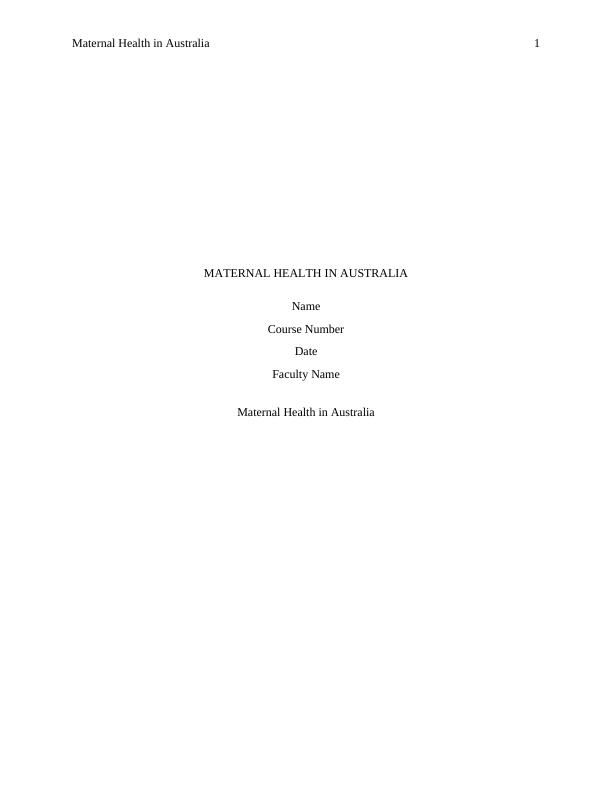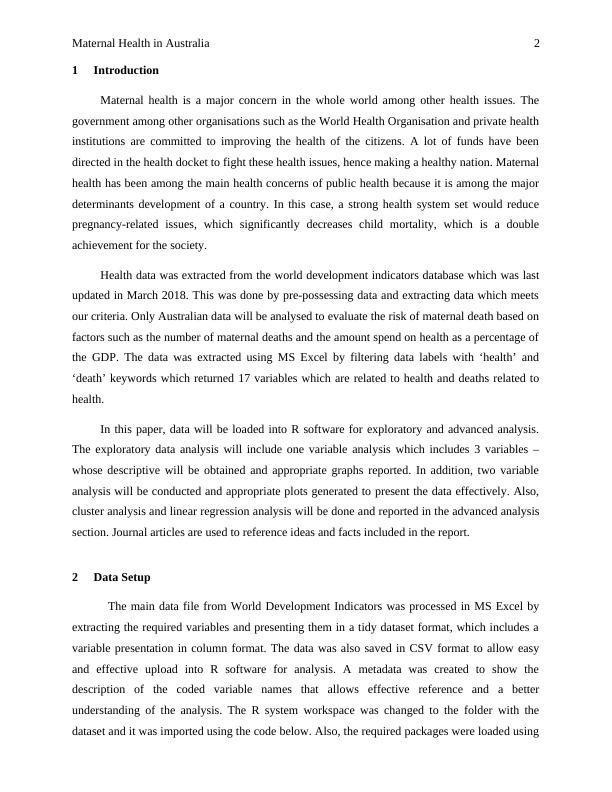Maternal Health in Australia: Risk Factors and Analysis
Analytical report for ICT110 Introduction to Data Science Task 2
12 Pages1883 Words486 Views
Added on 2023-06-11
About This Document
This paper analyses the risk factors and trends in maternal health in Australia. It includes exploratory and advanced analysis using R software, and discusses the relationship between health expenditure, number of maternal deaths, and risk of maternal death.
Maternal Health in Australia: Risk Factors and Analysis
Analytical report for ICT110 Introduction to Data Science Task 2
Added on 2023-06-11
ShareRelated Documents
End of preview
Want to access all the pages? Upload your documents or become a member.
World Health and Population Analysis
|11
|2363
|271
Data Analysis Report of Fatalities in Australia
|16
|1986
|225
Data Analysis Report of Health and Population Statistics of East Asian and Pacific Countries
|15
|2593
|166
Analysis of Fatalities in Australia
|12
|1650
|53
Analytical Tools for Healthcare Firms
|21
|2934
|250
Introduction to Data Science: Analysis of Health and Development Conditions in New Zealand
|15
|3036
|355




